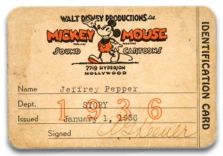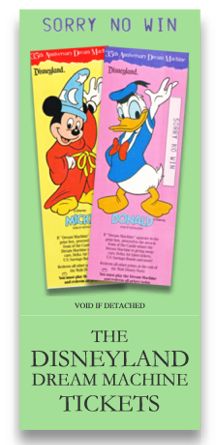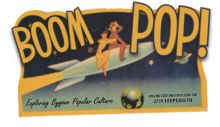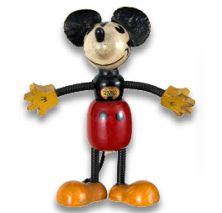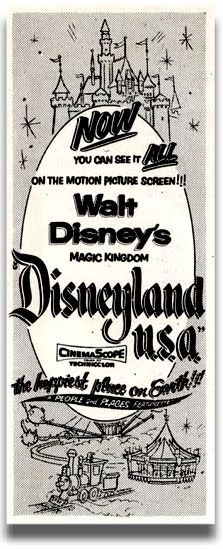Vinyl Magic - Yippi-A, Yippi-I, Yippi-O!
By Jeffrey Pepper
Originally published June 5, 2008
As Disney enthusiasts and historians, we attach ourselves to the obvious and too often overlook the equally notable and precious. This can be especially true in the Walt Disney Company's long and significant musical history. I have long been passionate about Disney music and had assumed I'd "heard it all." But over the past few years, primarily due to the efforts of music producer and archivist Randy Thorton and authors Greg Ehrbar and Tim Hollis, I have discovered a wealth of amazing material that lies beyond the higher profile feature film and theme park melodies and songs that people most commonly associate with Disney musical entertainment. It is a legacy of vinyl magic from bygone days that has thankfully been quietly reemerging into the digital age.
In the summer riding, singing, Yippi-I, Yippi-O
Back the echoes come a ringing, Yippi-I, Yippi-O
So sway in the saddle and swing all along, and sing another chorus of the Triple R Song
Yippi-A, Yippi-I, Yippi-O!
 A shining example of this now diminished vinyl magic is a campfire song that for a brief time in the mid-1950s embodied the happy charm and widespread popularity associated with the daily Mickey Mouse Club serial The Adventures of Spin and Marty. "The Triple R Song" may be a simple sing along tune, but it resonates a nostalgia for a time and place held dear by baby boomers such as myself.
A shining example of this now diminished vinyl magic is a campfire song that for a brief time in the mid-1950s embodied the happy charm and widespread popularity associated with the daily Mickey Mouse Club serial The Adventures of Spin and Marty. "The Triple R Song" may be a simple sing along tune, but it resonates a nostalgia for a time and place held dear by baby boomers such as myself."The Triple R Song" was penned by Stan Jones, a former National Park ranger who became well known for his 1949 hit "Ghost Riders in the Sky." As Ehrbar and Hollis note in Mouse Tracks: The Story of Walt Disney Records, "The campfire tune used multiple verses to sustain the plot and provide exposition. It was among the first tunes recorded for the Official Mickey Mouse Club Records released in 1955." Jones also composed the song "Goodnight Little Wrangler" for the series, and would continue his association with Disney Studio until his death in 1963, producing two different albums of western songs and the hit "Wringle Wrangle" for the film Westward Ho the Wagons.
Due to the disjointed nature of its presentation on the Spin and Marty serial, a studio recording of the song was also produced in 1955 and was included on the record album Walt Disney Presents Songs from the Mickey Mouse Club Serials. Tim Considine, in his persona of Spin Evans, featured prominently in the recording and was joined notably by famed Disney actor and voice performer Dallas McKennon, who performed the parts of Marty's butler Perkins and George the camp cook. In an interview feature on the Disney Treasures Spin and Marty DVD set, Leonard Maltin and series star Harry Carey, Jr. (Bill Burnett) made special mention of "The Triple R Song." Maltin observed, "I don't know how to explain it, but there is something about that simple song Way Out Here on the Triple R . . . it just stays with you."
 "The Triple R Song" is just that--engaging in its very simplicity as it tells an encapsulated version of the summer's events at the Triple R Ranch from that very first of the Spin and Marty serials. It is heartfelt and true and speaks clearly to the bittersweet nature of summer camp experiences: friendships forged, happy and exciting adventures, and the inevitable and emotionally painful goodbyes at the season's end.
"The Triple R Song" is just that--engaging in its very simplicity as it tells an encapsulated version of the summer's events at the Triple R Ranch from that very first of the Spin and Marty serials. It is heartfelt and true and speaks clearly to the bittersweet nature of summer camp experiences: friendships forged, happy and exciting adventures, and the inevitable and emotionally painful goodbyes at the season's end.With lyrics that include phrases such as "doggoned pretty song" and "he just couldn't be so doggone swell" it is no doubt easy for many to mock rather than appreciate the old fashioned 1950s era sensibilities that the song in many ways communicates. It matters not, for in the end the happy nostalgia and unabashed sincerity of Yippi-A, Yippi-I Yippi-O transcend any amount of jaded cynicism younger generations of viewers may wish to deliver upon it.
The day of parting now draws near, Yippi-A, Yippi-O
Tomorrow is the day we fear, Yippi-A, Yippi-O
Back home to school and scattered far,
But we'll never forget the Triple R
Yippi-A
Yippi-I
Yippi-O
Walt Disney Presents Songs from the Mickey Mouse Club Serials and "The Triple R Song" are available from the iTunes music store.








